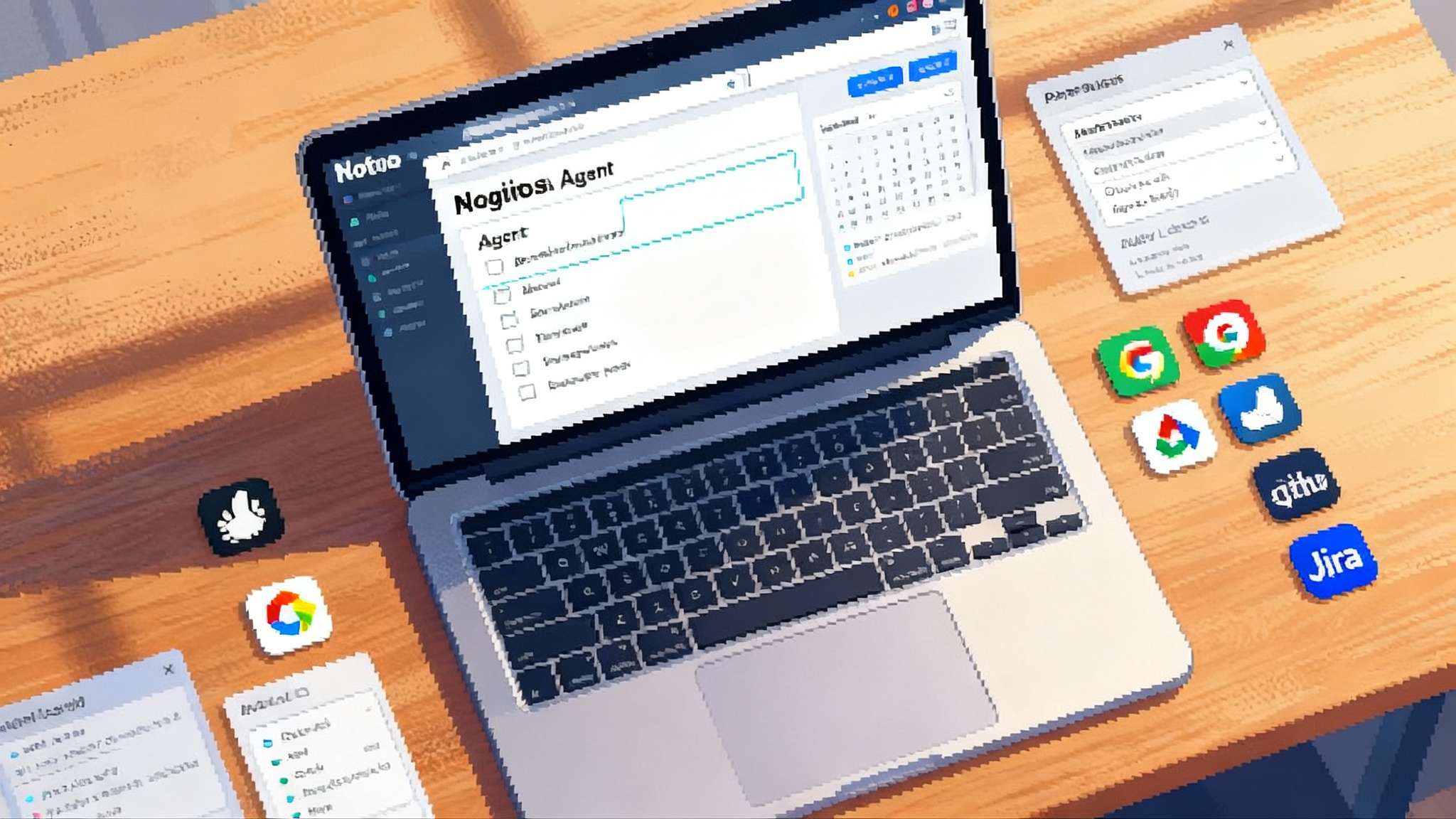Dreamforce's Voice‑Native Agents Signal the AI Labor Shift
Salesforce is adding native voice and hybrid reasoning to Agentforce, setting a practical path from demos to revenue in customer service and CRM. Here is what leaders can deploy in two quarters and how to measure impact.

The moment voice stops being a demo
Salesforce plans to introduce native voice and hybrid reasoning for Agentforce in October 2025, with the reveal timed to Dreamforce. The company says the upgrades will let agents speak, understand tone, and reason across steps, rather than answering one question at a time. That combination is the key that moves voice agents from stage demos to durable revenue in service and sales operations. The signal is clear in Salesforce’s own briefings and reporting about the launch, which describe emotion detection, multi step task handling, and tighter grounding in customer data as first class features of the release. See the coverage of the announcement for timing and scope in Axios’ preview of Salesforce’s reveal.
The context matters. For two years, most enterprises have treated voice agents as proofs of concept. Latency was too high, answers were too generic, and guardrails were too weak. This release is different because it pairs three ingredients that rarely arrived together: domain grounding in live customer data, conversation quality that feels human enough to stay on the line, and hybrid reasoning that can plan, call tools, and verify results before speaking. For a broader frame on how agents reshape knowledge work, see our take on agents replacing the desktop metaphor.
What changed under the hood
Think of today’s agent as a call center teammate that can speak, look up account context, run playbooks, and keep track of where the call needs to go next. Four shifts make that possible:
-
Low latency voice. Real time speech recognition, fast text to speech, and streaming model responses cut dead air. The agent can listen while it talks, handle interruptions, and re route mid sentence. The listener hears a conversation, not a sequence of audio clips.
-
Hybrid reasoning. Instead of a single pass answer, the agent can plan a path, call structured actions like checking entitlements or creating cases, verify the outcome, and only then speak. Planning and tool use reduce hallucinations and make outcomes repeatable.
-
Domain grounding. With tighter integration into data clouds and customer profiles, the agent does not guess. It reads policy, warranty terms, or product availability from the source of truth. That is the difference between a clever demo and a reliable teammate.
-
Emotion and intent cues. Prosody, pauses, and word choice give away whether a caller is confused or angry. An agent that adapts tone and flow to these signals reduces escalations and shortens time to resolution.
From talk track to revenue track
Voice first agents matter most where time, empathy, and correctness are expensive. In a service operation, three levers show up in the monthly business review:
-
Deflection without frustration. The agent answers questions that would have gone to a human without triggering the dreaded request for a supervisor. The goal is not to block the path to a person. The goal is to serve the issue right now.
-
End to end case resolution. Instead of creating a ticket for someone else, the agent completes the workflow. It verifies identity, checks eligibility, updates records, and confirms the outcome with the customer.
-
Measurable return on investment. Leaders can tie minutes saved and cases resolved to dollars. The cost model now includes large language model tokens, speech minutes, and action calls, but the numerator is revenue saved and customers retained.
How Salesforce’s bet stacks up
Salesforce’s approach blends native data grounding with a growing marketplace of actions and partner connectors. It is designed for contact center and sales operations leaders who want one place to manage evaluation, guardrails, and observability across voice and text. The hybrid reasoning upgrade makes its agents more planner than parrot, while the voice layer makes those plans audible.
ServiceNow has pushed hard in service operations with workflow native agents. Its strength is deep case management and routing, built on a platform operations teams already use. If your backlog lives in ServiceNow, the company’s agent tools can act close to the work by default. That makes governance and compliance easier for technology leaders who prefer one system of record for incidents, changes, and knowledge.
Sierra, the customer service agent company founded by Bret Taylor and Clay Bavor, takes a narrow and deep approach. The product is built to resolve support intents with high accuracy, and it ships with the playbooks, supervisor agents, and analytics that a support leader needs on day one. The tradeoff is focus. You get a sharper tool for service before you get breadth across sales and marketing.
Twilio’s ConversationRelay sits lower in the stack. It is the voice infrastructure that keeps the line clear while your chosen model and agent brain do the reasoning. It handles streaming audio, interruption, and expressive voices, and gives engineering teams a clean interface to plug in their agent logic. For teams that want to bring their own agent or mix providers, this can be the difference between a lab demo and a production line. Twilio described its general availability and architectural choices in its Twilio next generation platform announcement.
If you are a chief information officer or a head of customer experience, the choice is not either or. Many leaders will standardize on an operations platform like Salesforce or ServiceNow for governance and data, pair it with a voice carrier like Twilio for quality and coverage, and pilot a specialized agent like Sierra on targeted queues where accuracy and containment pay off the fastest.
The next two quarters: what you can unlock
Here is what a practical six month roadmap can deliver if you start in October:
-
Emotionally aware call deflection. Use sentiment and intent to decide when to continue, when to clarify, and when to invite a human. For example, an airline can let the agent rebook simple itinerary changes but switch to a human if the caller sounds stressed about a missed connection. The target: a 15 to 25 percent drop in transfers to humans for selected intents, with no drop in customer satisfaction.
-
End to end case resolution. Pick three high volume intents where the agent can perform all the steps. Think warranty check and replacement for a small appliance, appointment scheduling and reminders for a clinic, or plan change and pro rated billing for a telecom carrier. The target: 60 to 80 percent containment on those intents and a two minute reduction in average handle time for the remaining escalations.
-
Clear, credible return on investment. Track cost to serve per resolved case, net retention for customers who interacted with agents, and the rate of repeat contacts. If the math works, the agent pays for itself in months, not years.
Deployment playbook for leaders
This is a concrete sequence that reduces risk and reveals value quickly.
Step 1: Choose intents, not channels. List your top 20 service intents by volume and cost. Mark three as phase one targets if they meet all three criteria: repeatable policy, full tool coverage to complete the workflow, and clear success definition a manager would agree with.
Step 2: Write the talk tracks. Spend a day with your best agents. Capture the opening line, the clarifying questions, and the resolution language for each intent. These are not scripts. They are the conversational spine your voice agent will follow and adapt.
Step 3: Ground in policy and product truth. Curate the documents the agent is allowed to use. Add structured actions for every step it must take. Identity verification, entitlement checks, order changes, refunds, and case notes should be callable functions with fixed inputs and outputs. Make it impossible for the agent to invent a discount or promise something it cannot grant.
Step 4: Define a simple evaluation harness. Create a set of turn by turn test conversations for each intent. Include happy paths and messy realities. Measure the pass rate on four outcomes: correct resolution, policy compliance, tone adherence, and latency under your target threshold. Run this harness on every new model, voice, or prompt change before you ship. For why this matters at scale, see our analysis on enterprise benchmarks force reliability.
Step 5: Pilot in rings. Start with employees and friendly customers. Then move to a low risk queue during off peak hours. Only expand when your evaluation harness and live metrics agree.
Step 6: Staff the agent operations role. Assign a small team that treats the agent like a colleague. They monitor conversations, tune prompts and actions, and review edge cases. They own weekly quality reviews just as a support lead would for human teams.
Step 7: Prepare trust and compliance. Record consent for voice, store transcripts securely, and apply your retention rules. Make sure the agent identifies itself clearly and offers a path to a human at any time. Confirm regional data handling if you serve international customers. For governance patterns across platforms, note how the enterprise AI stack is unifying.
Step 8: Align pricing with value. Push vendors to price per resolved case or per minute with caps, not only per token. Ask for transparent line items for speech, model, and action costs. Lock in burst capacity for seasonal peaks.
Metrics that prove it works
Leaders need a small, durable scorecard. Use these metrics and definitions so finance and operations speak the same language.
- Containment rate: share of calls fully resolved by the agent without a human. Track by intent and customer segment.
- First contact resolution: share of issues resolved on the first interaction. Count agent and human together to avoid gaming.
- Average handle time: time from connect to resolution. For the agent, include both talk time and action time.
- Transfer quality: when the agent hands off, measure whether it passed context, history, and recommended next steps. Aim for near zero repeat questions.
- Policy compliance: sample conversations and score against written policy for eligibility, disclosures, and refunds.
- Customer satisfaction: gather a single question rating after resolution. Compare agent handled and human handled by intent.
- Cost to serve per resolved case: include voice minutes, model tokens, action calls, and platform fees. Compare against human cost for the same intents.
- Error taxonomy: classify the top ten agent errors each week. Fix the top three, and watch the list change over time.
Side by side: where each vendor fits
-
Salesforce Agentforce. Best if your customer data, knowledge, and case work already live in Salesforce. The hybrid reasoning release, combined with observability and action connectors, gives you one place to govern across channels. Expect faster time to production for mixed text and voice, and clearer enterprise controls.
-
ServiceNow. Best if your service backlog and operations culture are already built on ServiceNow. You get built in workflows, change management, and reporting. It is a strong choice for technology service management and complex internal support before you expand to consumer voice.
-
Sierra. Best if you want a narrow, deep push on customer support outcomes with a vendor that lives and breathes this one domain. It can be the fastest route to high containment on a handful of intents, which is how many programs justify their first year of spend.
-
Twilio ConversationRelay. Best if you want control over voice quality and infrastructure while retaining the freedom to bring your own agent brain. It reduces the integration burden that usually sinks a voice pilot.
Risks to manage now
Evaluation. Voice hides errors that text makes obvious. You need rigorous turn by turn tests, plus live call sampling. Measure latency to the 95th percentile, not the average. Pay attention to interruptions, barge in behavior, and background noise. Treat evaluation as a gate before every change.
Governance. The agent must have permissions like a junior employee. Use role based access to limit what it can do, log every action, and require a second check for high risk operations such as refunds over a threshold. Publish a decision log for major policy changes.
Pricing. Voice agents stitch together speech, models, and actions. If you pay per token for the model and per minute for voice, costs can drift. Put hard limits in configuration, set a maximum turn count per conversation, and end unproductive calls politely. Negotiate caps during procurement and test worst case scenarios during pilots.
Security and compliance. Confirm data residency, retention, and encryption. Check biometric consent rules for voice where you operate. Align recording notices with local law. These are table stakes for scaling beyond a pilot.
What to build first
Start small and win fast with three intents most enterprises share:
- Password unlock and two factor reset. High volume, clear policy, clean actions. Target 90 percent containment with a two minute handle time.
- Order status, refund eligibility, and replacement. Tie directly to commerce systems. Target 70 percent containment and measurable reduction in repeat contacts.
- Appointment scheduling and reminders. Integrate with calendars and messaging. Target fewer no shows and higher first contact resolution.
In parallel, build two assets that last: a high quality knowledge base that the agent is allowed to use, and a library of actions with clear contracts and audit logs. The agent improves as these assets improve.
The bottom line
Voice native, hybrid reasoning agents are arriving in a form that operations leaders can trust. Salesforce’s October reveal sets a tempo the rest of the market must match. ServiceNow brings the gravity of established workflows. Sierra shows how focus wins fast. Twilio keeps the line clear and the experience human.
The opportunity over the next two quarters is straightforward. Pick three intents. Ground the agent in policy and actions. Test it like a system of record. Price it like a utility. Measure it like a business. Do that, and the shift from demos to dollars does not take years. It takes a calendar, a scorecard, and the discipline to ship.








